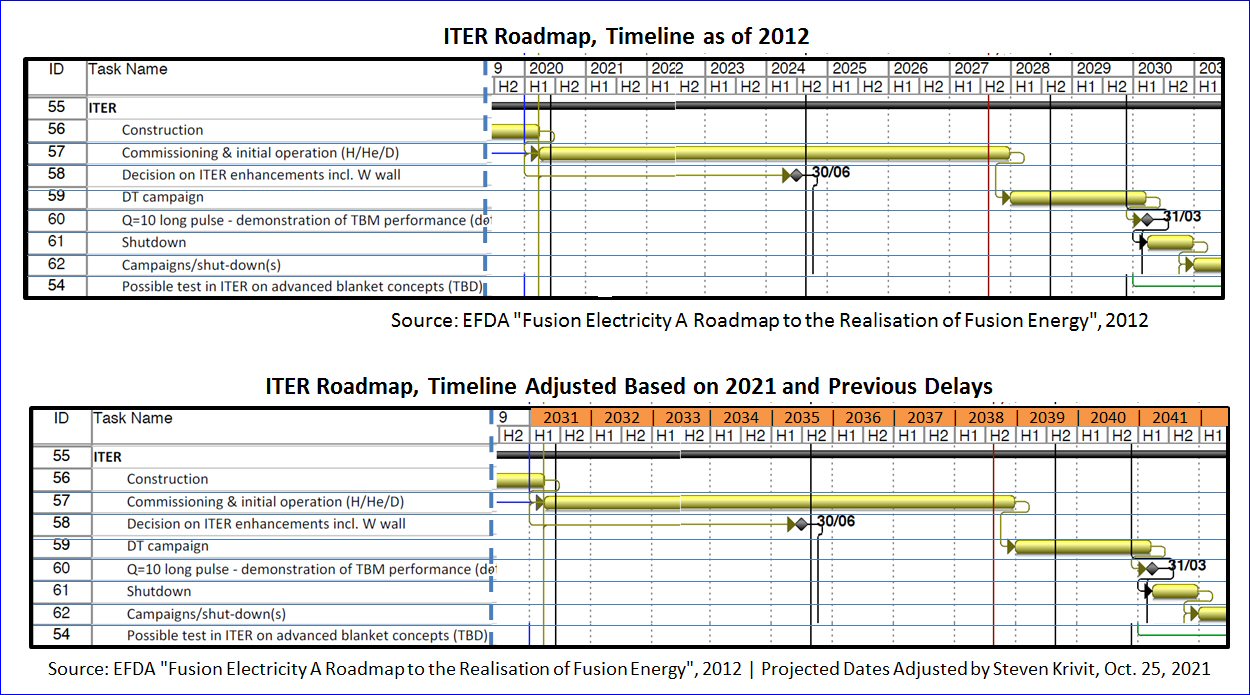ITER Organization Denies Projections of 2030 for First Plasma
By Steven B. Krivit
January 6, 2023
The ITER organization denies news reports that First Plasma will be delayed another five years, until 2030.
First Plasma has been a key milestone of the ITER project since its inception. It marks the moment when most of the construction on the ITER reactor is complete and experiments with test fuels — hydrogen and deuterium — can begin.
The French newspaper Les Echos reported the delay on Nov. 24, 2022. New Energy Times, based on information from ITER organization staff members who were not authorized to speak on the record, reported one year ago that the first experiments likely would occur in 2031.
Official Denial
New Energy Times asked Laban Coblentz, the head of communication for the ITER organization, whether the Les Echoes story was accurate.
“Statements like the one in Les Echoes,” Coblentz wrote, “or others talking about a ‘five-year delay to First Plasma,’ are neither official nor accurate and are somewhat misleading.”
Delay Factors
Factors for the delay include dimensional nonconformities in parts of the reactor sectors and design flaws in radiological shielding devices, as New Energy Times reported on Feb. 21, 2022. The ITER organization also identifies delays caused by Covid-19 and the Russian invasion of Ukraine.
In 2021, two French nuclear safety authorities, Institut de Radioprotection et de Sûreté Nucléaire and Autorité de Sûreté Nucléaire, told Bernard Bigot, the former ITER organization director-general, about the safety issues and defects. Bigot did not want to delay the schedule. He insisted that construction on the reactor should move forward and that the reactor sectors could be repaired inside the reactor chamber. The regulators did not agree. They told Bigot that he must not lower the sectors into the reactor chamber unless he can guarantee that the installed sectors can later be separated and removed. Bigot instructed his staff to lower the first sector into the pit.
On Nov. 21, 2022, Pietro Barabaschi, Bigot’s successor, in concurrence with the regulator’s guidance, said that the first sector will now be removed and repaired.
“Dealing with it in the pit on the module that has already been assembled would be enormously difficult. This means we have to lift out the installed module and disassemble it in order to proceed with the repairs,” Barabaschi said.
Roadmap
New Energy Times has not seen a more detailed ITER roadmap than the one published in 2012, and we continue to rely on this — adjusted for delays — as the most authoritative sequence of planned events. Click here to see the full roadmap as it was published in 2012.
The test-fuel experiments are slated to run for seven years, until scientists feel confident enough to add radioactive tritium to the fuel mixture. During this time, required components to the inner wall of the reactor will be added to allow the use of deuterium-tritium fuel.
After two years of running preliminary experiments with deuterium-tritium fuel, the team hopes to increase the input power and thus achieve the reactor’s maximum thermal power output performance of 500 megawatts and duration of 500 seconds. The reactor is expected to consume about 440 megawatts of electricity.
Full-power deuterium-tritium operation would therefore take place around 2040, which is 20 years before global production of tritium is expected to terminate.
Tracking the Delays
When the ITER project was approved by its international partners in 2007, the organization estimated that ITER would begin operating by 2017.
By 2012, official documents showed First Plasma pushed back to 2020.
In 2016, the ITER organization formally acknowledged that First Plasma was pushed back to 2025.


